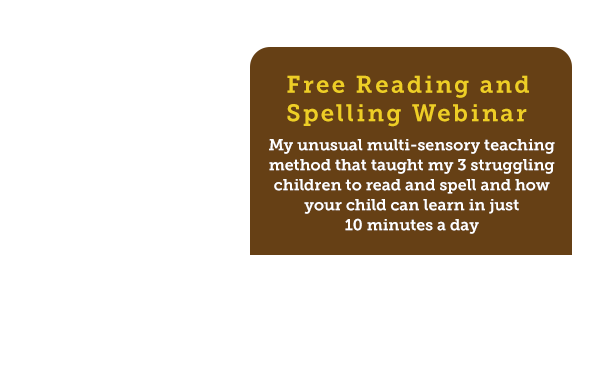Kids today are surrounded by electronic multi-media in many forms including; phones, computers, tablets and gaming devices.
They watch videos, stay in touch with their friends, constantly search the internet, follow their favourite YouTubers and keep abreast of current world events via instantaneous news feeds… all whilst playing a riveting computer game and talking on a headset to their friends. They are constantly switched on and constantly entertained.

Multi-tasking has become second nature and the world they live in is being coming faster and overall more entertaining.
I’m not saying this is right or wrong… It’s just the way it is.
So here’s a question for you; where does that leave learning to read and spell in their eyes?
In a nutshell their brains are changing and so are their expectations of what is a worthwhile educational pursuit.
I’m in my 40’s now, and it was only 30 or so years ago that we had one TV in our home, one car, one phone with a cable connected to the wall and nothing else except a book, a conversation around the dinner table or the encyclopedia to gather information from. Most of our new learning came from our parents or our teachers at school.
Well that’s certainly not the case for children today.
 Teachers just can’t compete with the information age and the rise of technology that our children have experienced. It’s no wonder our children are losing interest in education. The education sector just can’t keep up. To sit still in a classroom of 25-30 students, behind a desk, listening to a ‘chalk and talk’ teacher is not working for them and it’s not a surprising really. Just ask them, kids find their school day
Teachers just can’t compete with the information age and the rise of technology that our children have experienced. It’s no wonder our children are losing interest in education. The education sector just can’t keep up. To sit still in a classroom of 25-30 students, behind a desk, listening to a ‘chalk and talk’ teacher is not working for them and it’s not a surprising really. Just ask them, kids find their school day
excruciatingly tedious and boring.
Our kids have little understanding of what was the norm for their parents and teacher’s generation. That’s how quickly things have changed. On top of that, they look at us in disbelief and get frustrated when we ask them to assist us to download a new song or access a new app from the internet. “Ohhhh mum,” they say…”You really don’t get it do you?”…
 “Well no… that’s why I’m asking you… my darling child.” That last bit was said under my breath… with a touch of sarcasm.
“Well no… that’s why I’m asking you… my darling child.” That last bit was said under my breath… with a touch of sarcasm.
So now we can see it from their point of view; the question for us as parents and educators is what do we do about it?
Next week we’re going to explore this further….and if you have some insight or ideas or know of some new learning strategies being used by innovative teachers to excite students please comment below and let me know.




















Thank you for this article. Life was simpler for me as a 70s child it seems. Then, I also believe that some things were quite tedious, such as looking up a phone number or a post code! I remember the boring texts I learnt to read; SRA cards come to mind! Everybody in my grade was competing to ‘finish the levels.’ The accompanying comprehension questions were very basic and there was little discussion, if any, about inference, character motivation or author devices.
Today, some schools have classrooms Apple TV or other monitors that project what teachers want the students to focus on. From my experience, this sort of explicit teaching using technology seems to engage the children as well as giving a multi-sensory approach to Inquiry learning and the teaching of Literacy and Numeracy. I’ve recently seen songs and the old chants and rhymes being taught in this way (when I actually wrote the chants with Texta on posters ‘back in the day.’) Oh how things have changed! Audio component to teaching reading is engaging.
However, we know that the physical act of tracking text by eye/finger in print is difficult for some children. I have used Word to highlight text on a monitor using colours different to the background to show a spelling pattern. Of course ‘dyslexic-friendly’ colors, simple layout (not too many lines on the screen at once to highlight a sentence, or words, and font to highlight blends are part of my practice.) This approach focuses the students.
So, when I ask student to hunt for same patterns of spelling in their own writing, in other texts and around their environment, the students can do usually this independently (in various capacities.) I call this open-ended task ‘finding word relatives,’ or ‘word families.’ To keep my teaching explicit, I focus on one spelling pattern or blend at a time.
The activity is one where I have the long length of paper rolled out in the middle of the room while children write all over it. (Some even lie on their bellies on top of the paper, if they’re the only ones writing on it at any given time!) I love seeing that! Given that there is good awareness of personal space and peer teaching in the process, it works well.
The resulting lists of ‘word relatives’ are surprisingly long, being full of multiple contributions from many students within a group. Not all words are ‘correct’ but this is part of the teaching in a supportive group setting. Reflection time when we discuss individual contributions and decide why the words are/are not related, is key to the learning. Sometimes, students see their own errors in their thinking and then edit the list. This is encouraged.
I am now thinking that mind-mapping apps such as ‘Mindly’ on a large monitor could be used instead of our roll of paper, but I have not yet tested this idea in the classroom. I must admit, that I am still a fan of old-fashioned writing with big thick markers and having a poster which can be referred to along the way, to scaffold learning, instead of logging on and finding it in a laptop file.
Alas, I feel that the act of handwriting and modeling correct letter formation is fading from the classroom routine. As with most things, I feel that balanced judgment is needed when embracing change.
I do let my kids have hour a day on computer but all learning stuff no gaming in my house dont like it. I see most kids these day sitting down with ipads etc at park, beach and its really sad that parents use these as babysitter. I dont think its the way to teach children. We do alot of reading and have word cards around the house and bedroom. My boy feels dumb but hes not just has alot of trouble reading and writing. Maths and sport he is amazing at and he tries so hard to be like rest of kids when comes to reading and writing. His teacher said he tries harder than most of children in his class as he wants to learn just very hard for him. But we have great support in our school and out of school. I am trying different stuff everyday to help him read and write. He is year 3 and is angry at himself all the time cause he cant read. I feel so sorry for him but we are doing what ever we can to help our little man. I tell him everyday he is special not silly, but it breaks my heart to hear them words from him. Every child is different and they are all good at something.
I think children can still be engaged in learning if they are inspired.We have to capture their interests and imaginations.
We have to work from what they know and invite their contributions.When they are taught as passive instruments, made to learn grammatical terms without the maturity to understand how to apply these, given a curriculum to advanced for their ability…..need I go on, they become disenchanted.
Children need to experience childhood.
They need the opportunities to listen to good stories, school trips and age related expectations, whilst allowing for those who what to know more. As to loss of skills in handwriting and reading for information, these have to be worked on.
I am currently teaching cursive handwriting to Reception children.Pencil grip and control, long roll of paper, rainbow letters tracing over mine, playdough, whiteboards…..they are getting there. Teach children to skim and scan, use school libraries properly and draw and label pictures when this is relevant.